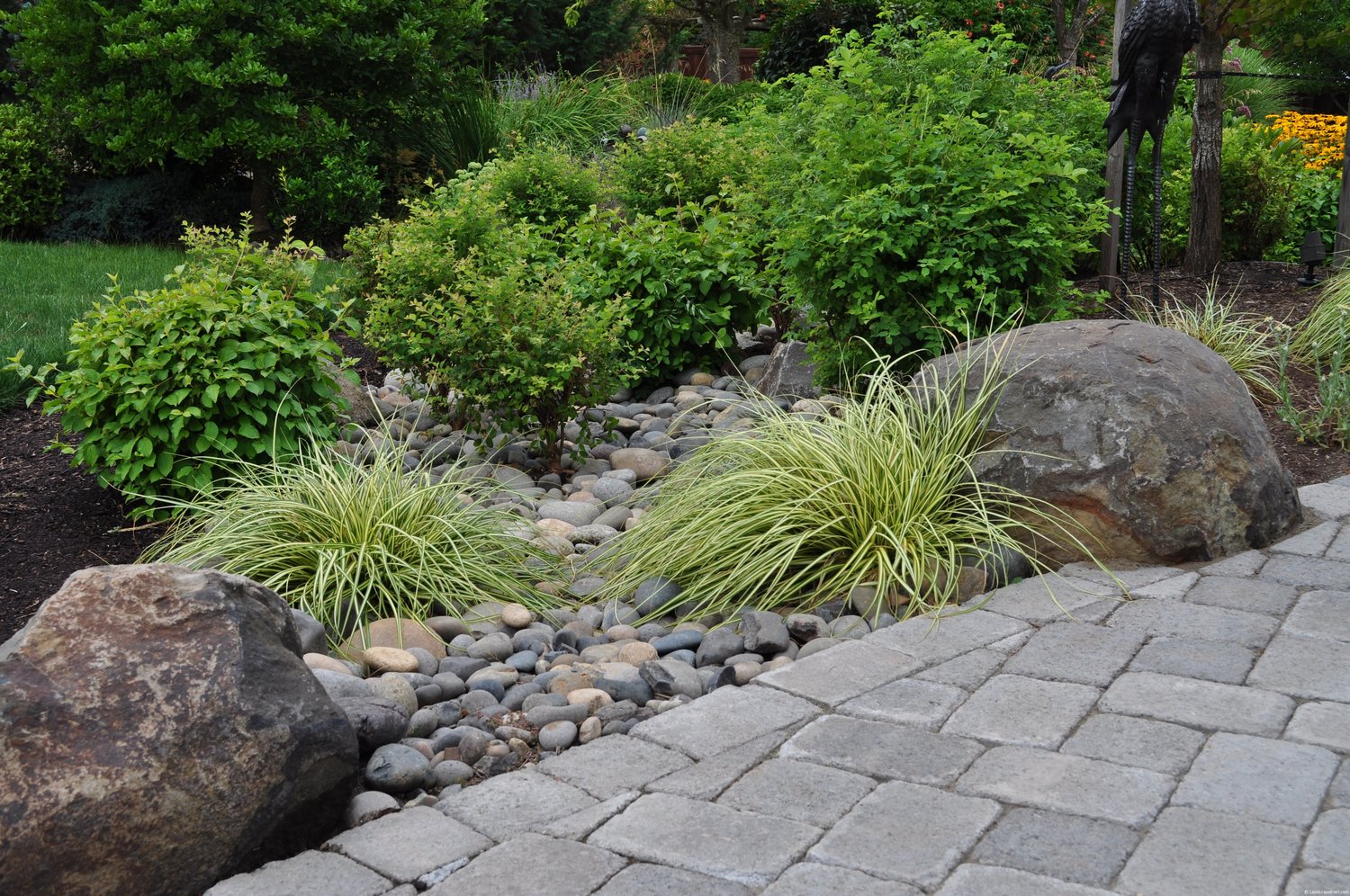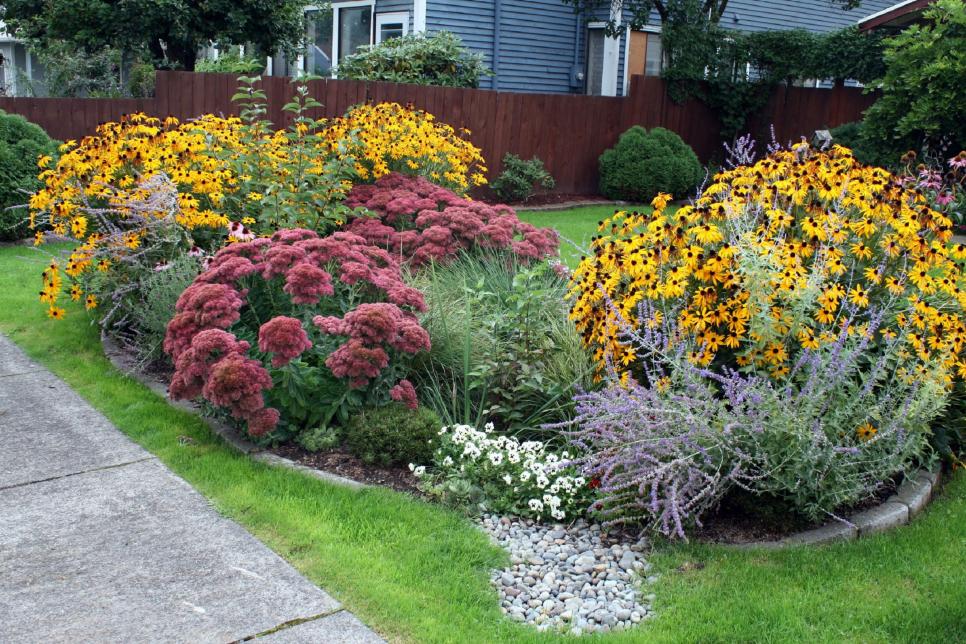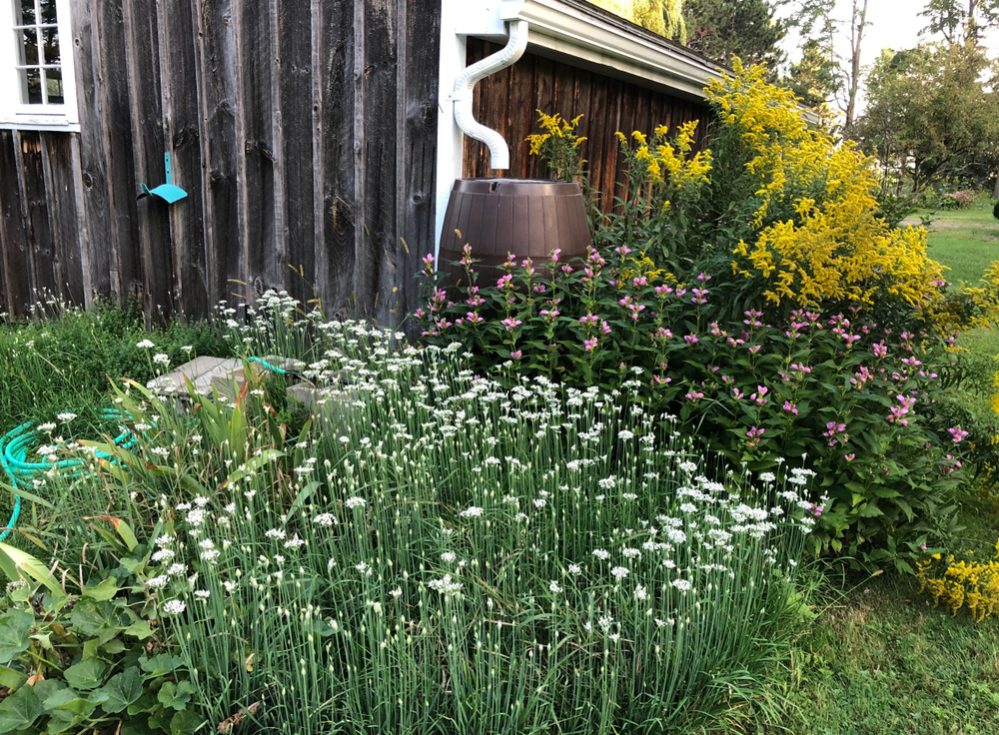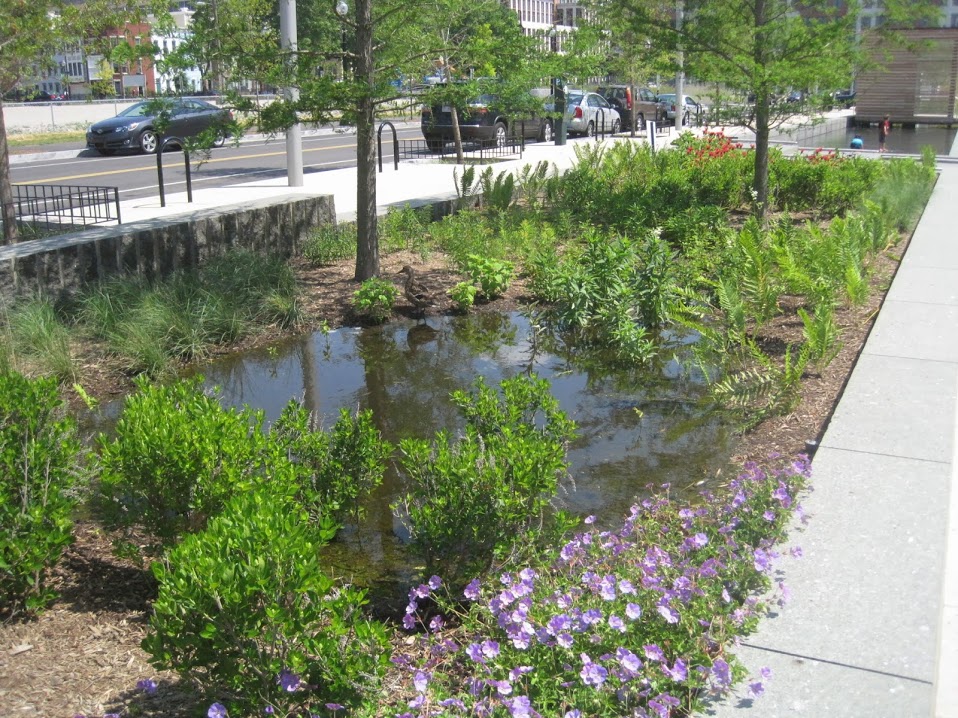Rain Garden. Rain gardens are designed landscape sites that reduce the flow rate, total quantity, and pollutant load of runoff from impervious urban areas like roofs, driveways, walkways,and parking lots, and compacted lawn areas. A rain garden is a depressed area in the landscape that collects rain water from a roof, driveway or street and allows it to soak into the ground.

These plants help the water rapidly seep into the soil, away from your house and out of your hair.
The middle zone will have water (up to a few inches) but will drain more quickly.
Until a rain garden's plants are established, even drought-tolerant plants require supplemental watering to survive dry seasons. Planting a rain garden is a way to enhance your landscape's aesthetic while absorbing and cleaning rainwater. In fact, rain gardens experience a wide range of moisture conditions, ranging from temporary flooded bog, to bone-dry.







